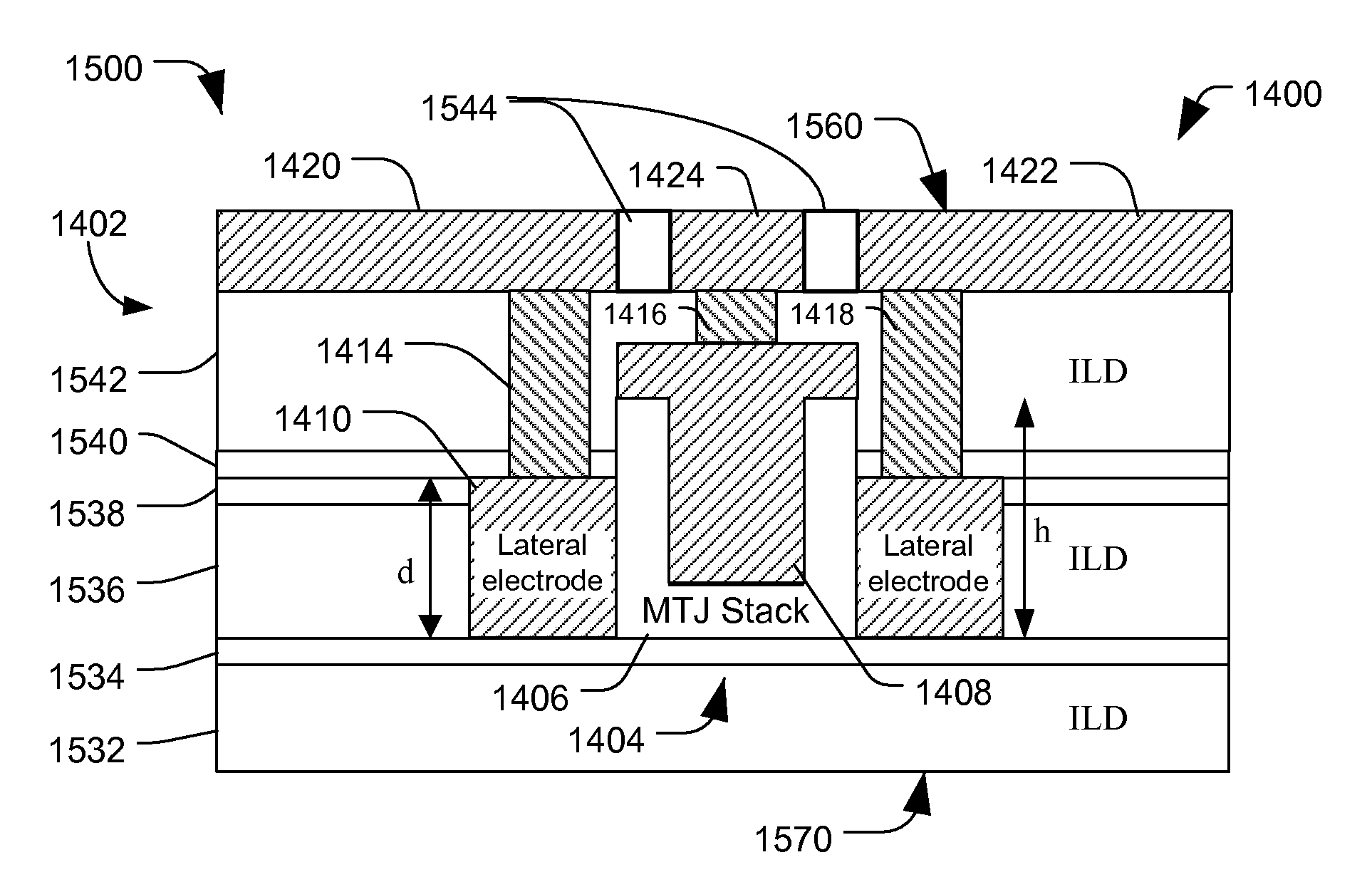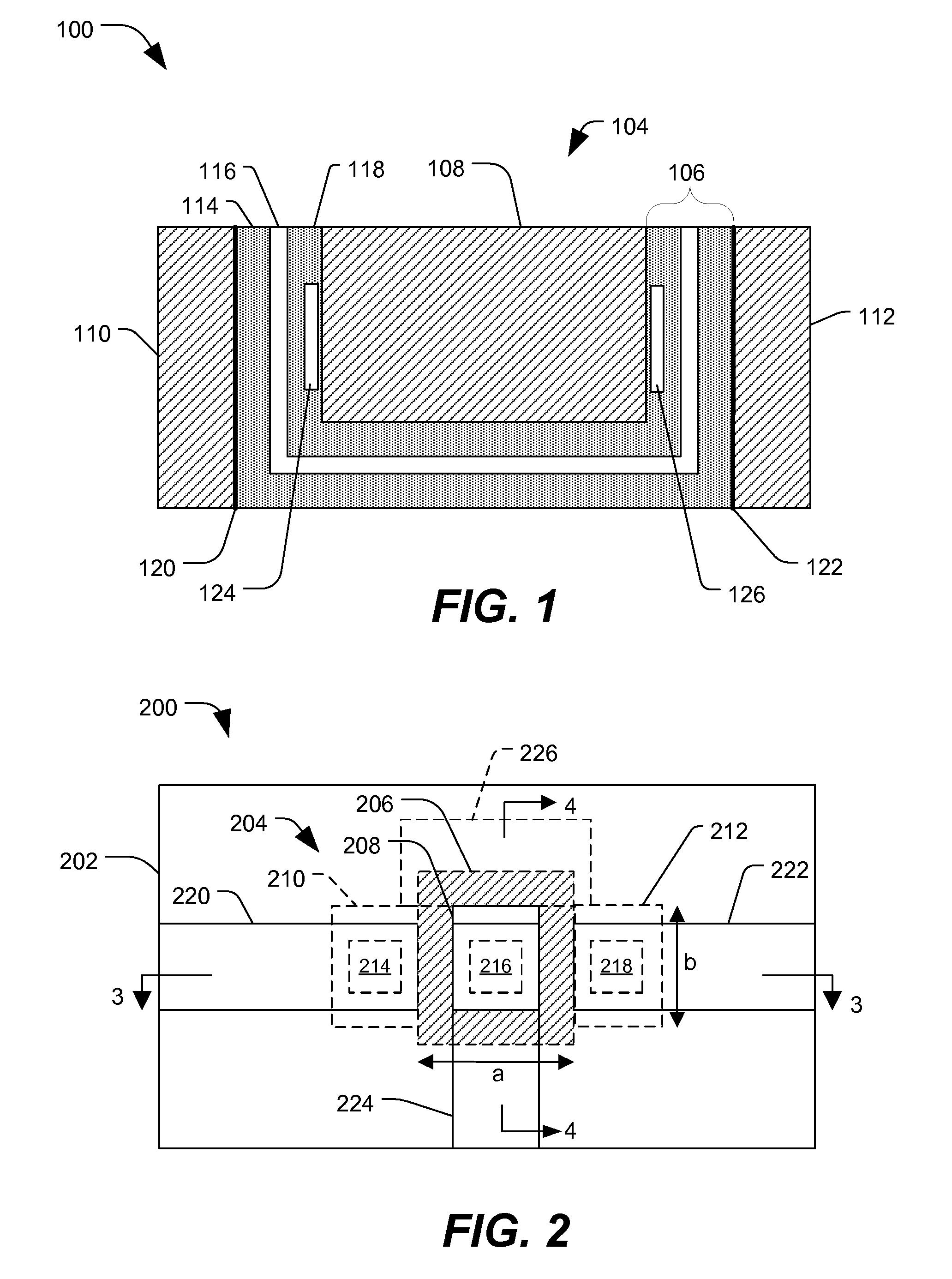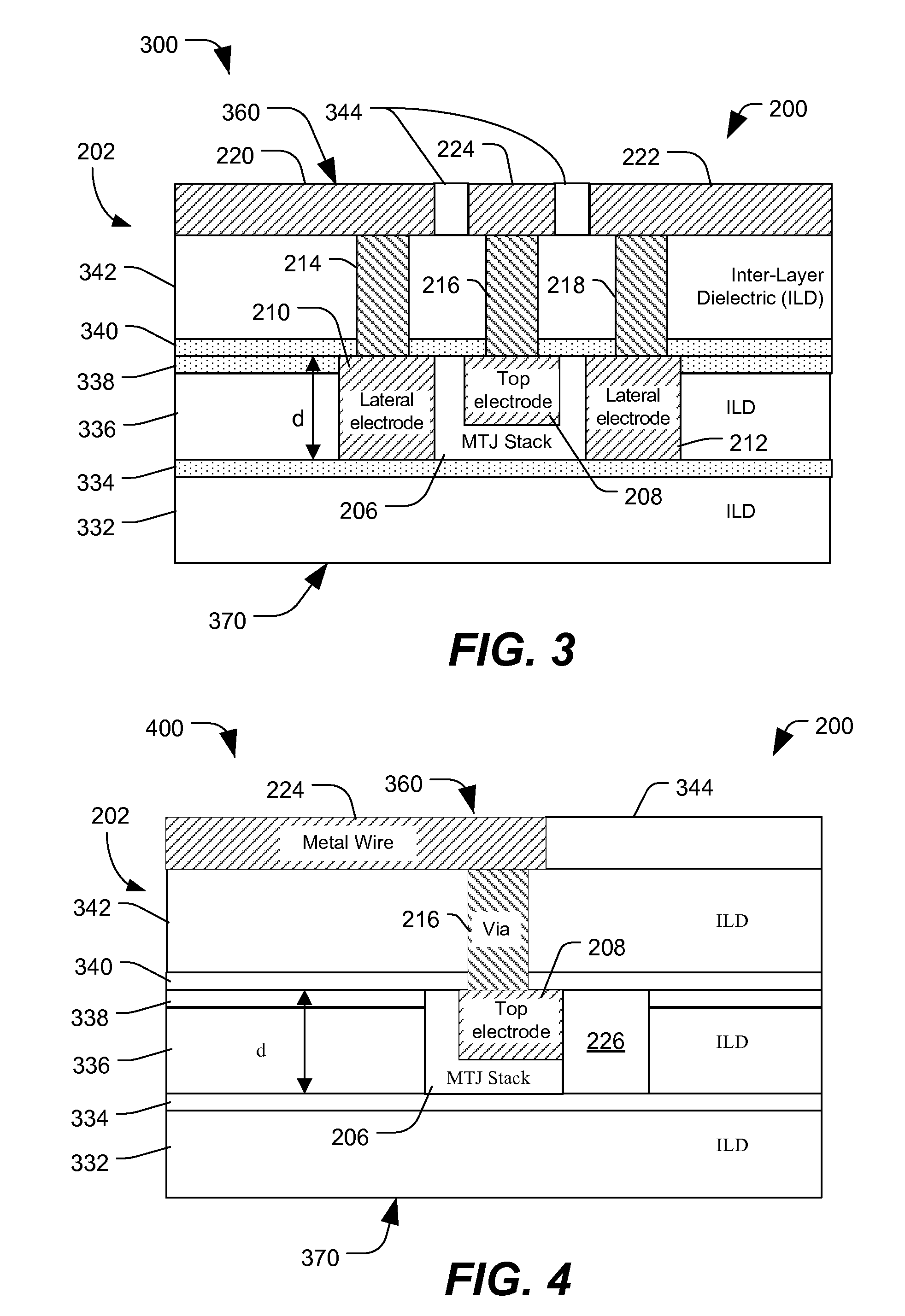Method of forming a magnetic tunnel junction device
a magnetic tunnel junction and cell technology, applied in the direction of inductance/transformer/magnet manufacturing, magnetic bodies, instruments, etc., can solve the problems of increasing the complexity of wire-trace routing, limited mtj device size, and increasing data density in the x-y direction, so as to reduce parasitic resistance and capacitance, shorten contact distance, and enhance efficiency
- Summary
- Abstract
- Description
- Claims
- Application Information
AI Technical Summary
Benefits of technology
Problems solved by technology
Method used
Image
Examples
Embodiment Construction
[0055]FIG. 1 is a cross-sectional diagram of a particular illustrative embodiment of a magnetic tunnel junction (MTJ) cell 100 including lateral magnetic domains. The MTJ cell 100 includes a magnetic tunnel junction (MTJ) structure 104 having an MTJ stack 106, a center electrode 108, a first lateral electrode 110, and a second lateral electrode 112. The MTJ stack 106 includes a fixed magnetic layer 114 that carries a magnetic domain having a fixed magnetic orientation, a tunnel barrier layer 116, and a free magnetic layer 118 having a configurable magnetic orientation. The MTJ stack 106 may also include an anti-ferromagnetic (AF) layer (not shown) that pins the fixed magnetic layer 114. The MTJ stack 106 may also include additional layers (not shown). The fixed magnetic layer 114 is coupled to the first lateral electrode 110 via the AF layer at first lateral interface 120 and contacts the second lateral electrode 112 at a second lateral interface 122. It should be understood that th...
PUM
 Login to View More
Login to View More Abstract
Description
Claims
Application Information
 Login to View More
Login to View More - R&D
- Intellectual Property
- Life Sciences
- Materials
- Tech Scout
- Unparalleled Data Quality
- Higher Quality Content
- 60% Fewer Hallucinations
Browse by: Latest US Patents, China's latest patents, Technical Efficacy Thesaurus, Application Domain, Technology Topic, Popular Technical Reports.
© 2025 PatSnap. All rights reserved.Legal|Privacy policy|Modern Slavery Act Transparency Statement|Sitemap|About US| Contact US: help@patsnap.com



